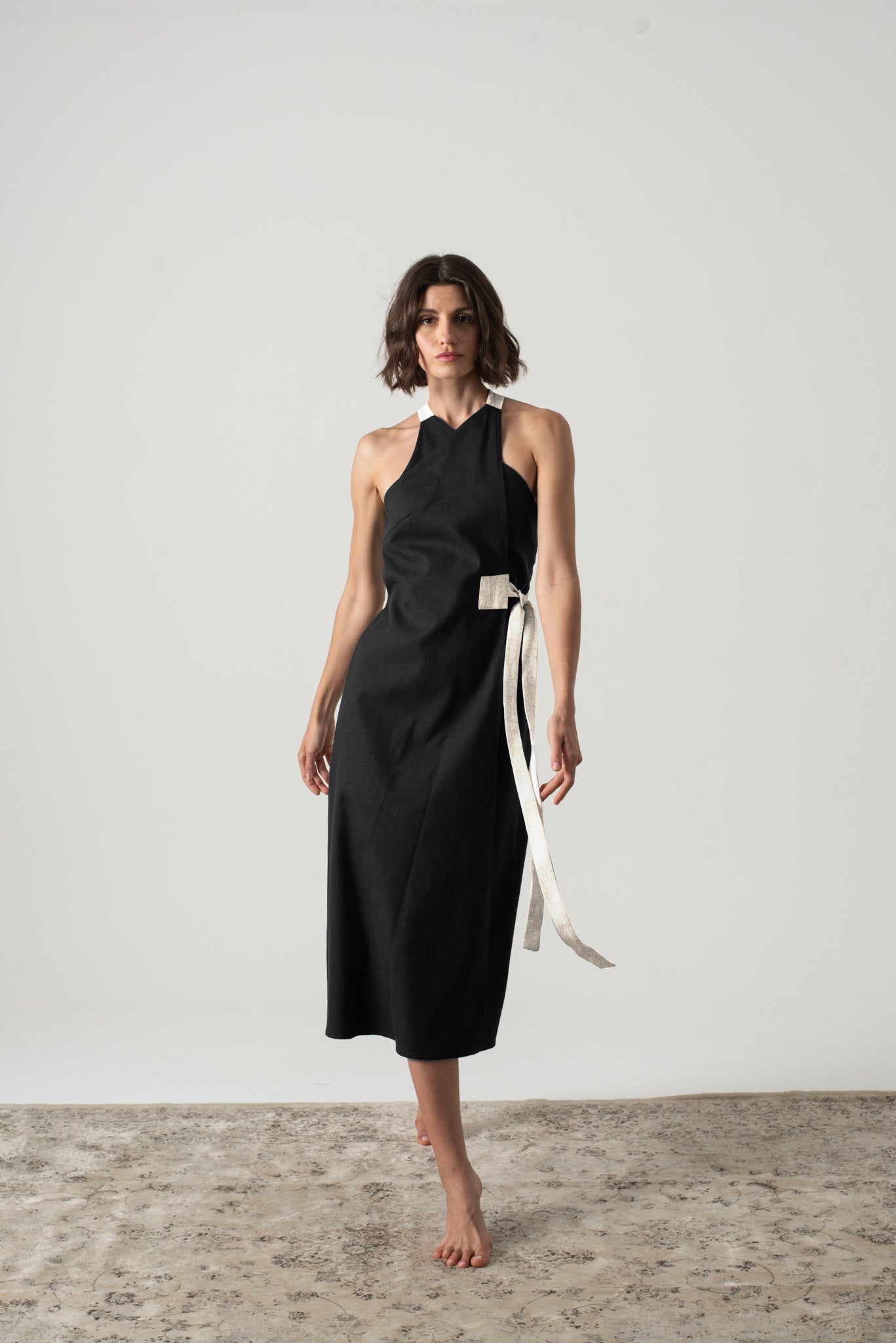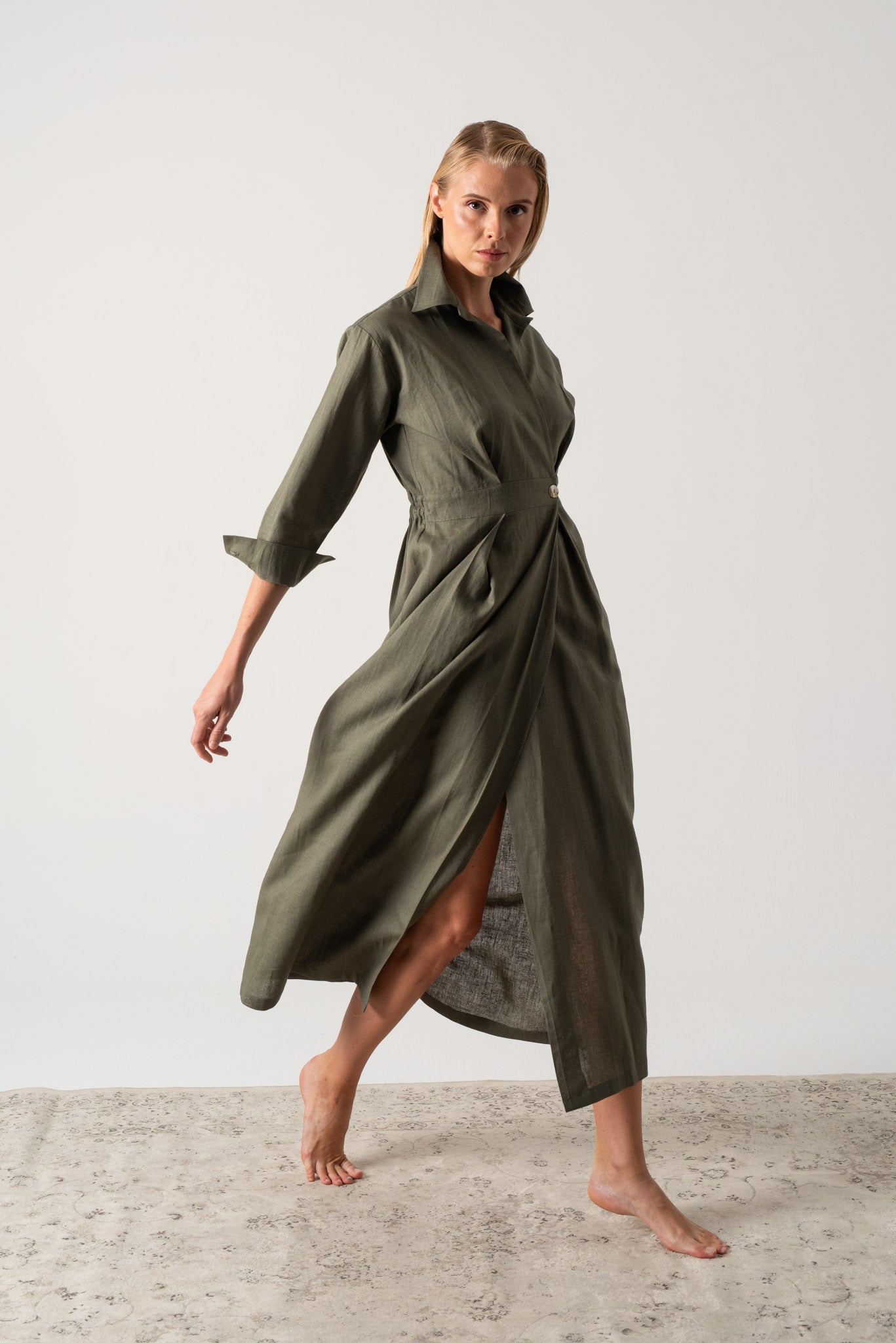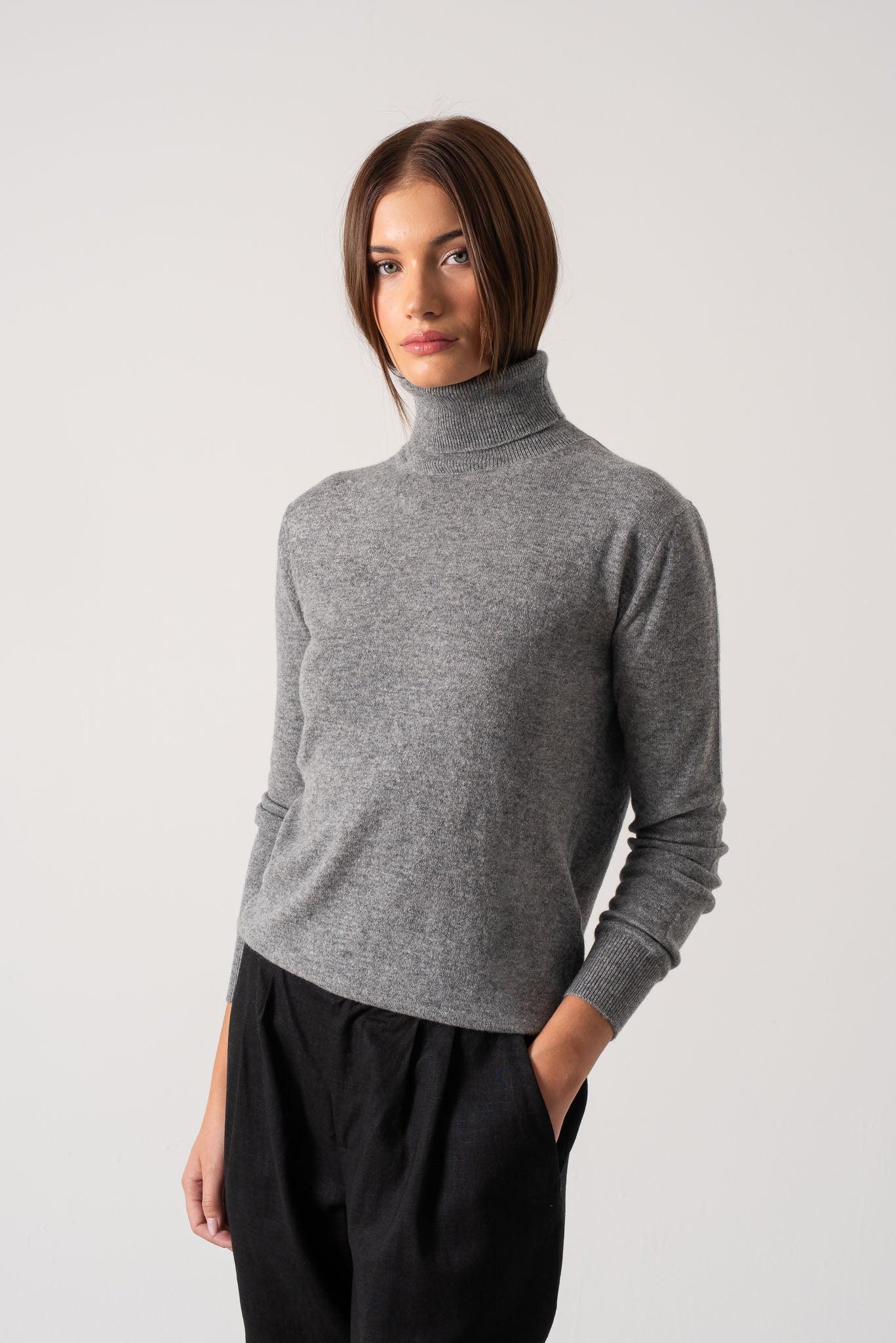Explore our stain removal guide and find out how to get blood out of linen, as well as other stains like wine, tea and grease. You'll be able to take the best care of your favourite linen pieces and ensure they continue to look flawless even after repeated wear, and plenty of fun memories.
Linen pieces are meant to be effortless. Effortless in how elegant they are, how easily they work with the rest of your wardrobe and how effortlessly good you feel in linens, even if you're not on holiday.
So, you can wear linen clothing everywhere and anywhere without too much fuss. We've shared our stain removal guide below. From coffee stains to wine and chocolate, you shouldn't have to miss out on some of life's greatest pleasures because of fear of ruining your linen pieces.

Top tips for removing stains from linen
We'll show you step-by-step instructions for removing some of the most common stains from linen tops, pants and dresses. Yet even before that it's super helpful to keep in mind the tips below. We want your linens to last forever!
- Act quickly. As soon as you see the stain, try to start the removal process before the stain dries into the linen. This will be the most helpful way to clean the stain successfully and without causing damage to the fabric. Whatever the stain, running it under cold water is an excellent first step. Even if you're not at home and don't have enough time to run to the laundry room, you can at least find cold water somewhere. We hope!
- Identify the stain. Different stains need different removal methods. So, it's crucial to know whether the stain is grease, protein, coffee or alcohol.
- Turn your clothing inside out. Let the cool water run through the "wrong" side of your pieces. This could help the water push out the stain from the fabric. Plus, if you're applying spot treatments, it's safer to do so from the inside.
- Don't machine wash until the stain is removed. Sadly, stains will not magically come out in the wash. Putting stained clothes in the dryer and washing machine will only make the stains set even more into the fabric, making them almost impossible to remove.
- Keep your laundry room well-stocked. We never know when a stain will happen—usually when we're trying to be the most careful—so it's best to keep all your laundry supplies and stain removal products on hand. Time is of the essence, and it also keeps your stress levels down.
Here are a few essential DON'TS when it comes to removing stains from linen
- Don't use hot water. Use only cold water for all types of stains. Hot water can make some stains even harder to remove, which is not the goal.
- Don't rub the stain. It may be tempting but rubbing the stain could make it sink even further into the fabric. You could also risk damaging the fabric, especially if your linens are delicate. Try to blot the stain instead.
- Don't use bleach. If you love your linens and want to get as much wear as possible out of them, try to stay away from bleach. Especially, for coloured linens. Chlorine can weaken the fabric’s fibres.
Want to take the best care of your linen trousers and other linen pieces? It's not all about stain removal. Washing is also very important. Discover our blog on how to wash linen perfectly so there are no surprises.
How to get blood out of linen
Follow these steps below to remove blood from linen clothing and keep your pieces looking impeccable for years.
- Turn your clothing inside out.
- Run cold water from the tap onto the stain. Let it run until you can see that the stain looks the same.
- In a spray bottle, create a half-and-half mix of water and liquid detergent.
- Spray the diluted detergent onto the stain. Leave it to sit for about 15 minutes.
- Rinse with cold water.
- Repeat the process if the stain has not been completely removed.
- Once the stain is gone, wash your linen pieces as normal.
How to remove grease or oil from linen
Grease stains are all too common. Even face oils can get onto your clothes and leave stains. But not to worry. Here are the steps to follow to remove grease from linen without pulling your hair out.
- Use a paper towel to soak up any grease.
- For heavy stains, you can sprinkle baking soda or baby powder over it.
- Put a little dishwashing soap on top of the stain. Gently rub the soap into the linen with your finger.
- Let it sit for at least 30 minutes. If you have time leave it for even longer.
- Rinse with cold water.
- Make sure the stain is completely removed, before washing your linens.

How to remove coffee or tea from linen
Whether you're in your green tea healthy era or can't function without an iced coffee, we'll show you how to remove stains from your best linen pieces. Fingers crossed, you won't even have to use them.
- Dab the stain with a paper towel.
- Run cold water onto the stain.
- Put dishwashing liquid on the stain and dab it with your finger.
- Then rinse with cold water.
- If the stain still doesn't disappear, try using an enzyme-based detergent on the stain. Leave it to sit for 15 minutes.
- Try a homemade solution if you don't have an enzyme-based detergent. Mix 1 cap of laundry detergent with 1 tablespoon of white vinegar. Spray the stain with this mixture and leave it to soak for as long as possible.
- Rinse with cold water.
- Once the stain is completely gone, wash your linen pants as normal.
How to remove wine from linen
Stay carefree on your nights out with our top tips on how to remove wine stains from linen. Outdoor lunches and garden parties call for crisp linen dresses and a chilled glass of bubbly. Keep these steps for removing wine from linen in mind, just in case the unexpected happens.
- Hold the stain under cold water.
- Add sparkling water to the stain. Leave it for 1hr.
- If the stain is still present, dab it with enzyme-based detergent.
- Or leave the linen to soak in a mixture of 1 cap of dishwashing detergent and 1 tablespoon of white vinegar.
- Only after the stain is removed, clean your linens as usual.

How to remove chocolate from linen clothes
Remove chocolate without any headaches from your linen clothing with our step-by-step instructions. There's no need to rush to the dry cleaners, you can take care of the problem at home and by yourself. Just try to act quickly because chocolate can quickly melt into the fabric and can then be trickier to remove.
- Gently remove any chocolate bits left on the fabric. You can use the back of a spoon.
- Turn the clothing inside and out. Run cold water through the stain.
- Spray the stain with diluted dishwashing soap mixture.
- Let the mixture sit until the stain is removed.
- Rinse with cold water.
- If the stain is still there, dab with enzyme-based detergent.
- Wash your linen pieces as normal.
What is an enzyme-based detergent?
Just like retro stripes and cherry-red footwear are the hottest trends in fashion right now, so enzyme-based detergents are all the rage in the laundry world. They're a less harsh, much more natural way to clean stains and dirt from clothes, without damaging the fabric.
Enzyme-based detergents are perfect for luxury linens, like an organic linen midi dress. They're plant-based and pH-neutral and use enzymes to break down heavy stains. Remember that wool or silk are protein-based fabrics and should not be cleaned with enzyme-based detergents.

Can you iron linen?
Yes, you can iron linen without hesitation. It's just important to know a few tricks to help make the whole process simpler. Ironing your linens when they are damp will help smooth them out quicker. If there are any stains on your favourite black linen shirt, only iron them after removing the stain first. The heat from the iron will set the stain into the fabric and make it a nightmare to remove.
For more tricks discover our blog on how to iron linen. If you're short on time or on an Italian getaway, then leave the iron at home. The naturally crumpled look of linen is what gives the textile its charm and personality.
Conclusion: How to get blood and other stains from linen clothing
Turn your most treasured linens into the investment pieces they truly are by keeping them in pristine condition. Discover our top tips on how to get blood out of linen, along with other stains like wine, chocolate and grease.
- Cold water. Whatever the type of stain, your first action should always be to run it under cold water.
- Create a diluted dishwashing mixture. Most of the common stains are all treated the same way, at least at first. At home you can create your own stain removal solution. Mix 1 tablespoon of dishwashing liquid soap into 200ml of water. Put it in a spray bottle and you can spray it on many stains. Try to use fragrance-free soaps for a gentler approach.
- Do not wash, dry or iron linen until fully clean. Sometimes it can be tempting to hope that stains will come out in the wash, but it's highly unlikely. Putting stained linens in the washing machine or dryer will only make the stain harden into the fabric and set even more.









